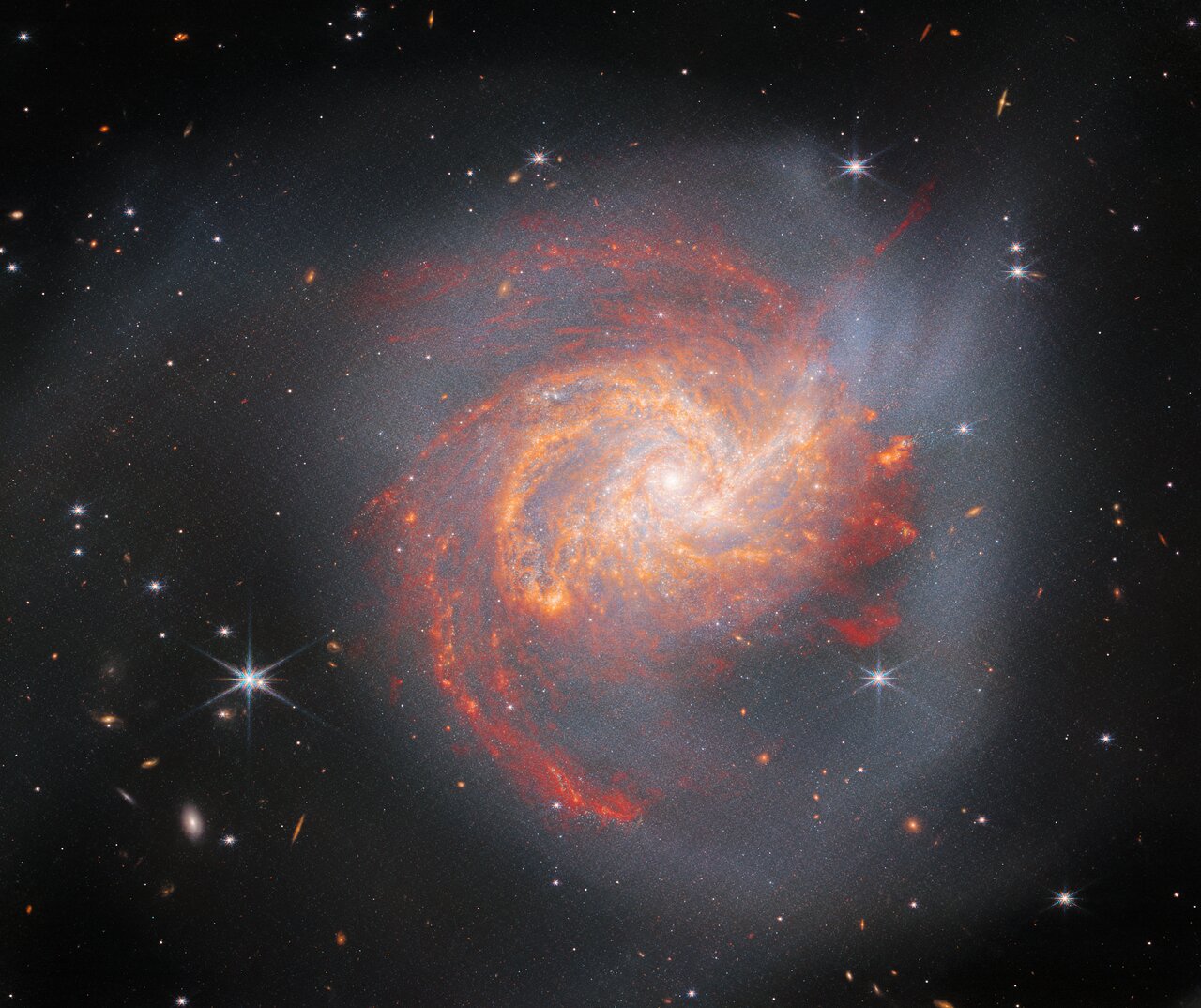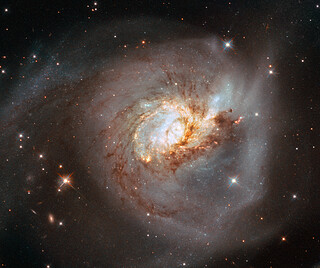Hubble and Webb’s views of a titanic clash
The peculiar galaxy NGC 3256 takes centre stage in these two images. This distorted galaxy is the wreckage of a head-on collision between two spiral galaxies which likely occurred 500 million years ago, and it is studded with clumps of young stars which were formed as gas and dust from the two galaxies collided.
The left image contains data from the NASA/ESA/CSA James Webb Space Telescope, using both the Near-InfraRed Camera and the Mid-InfraRed Instrument. The collision that produced NGC 3256 spurred an enormous burst of star formation, and these new stars radiate enormously brightly in infrared wavelengths as seen here.
The right image contains data from the NASA/ESA Hubble Space Telescope’s Advanced Camera for Surveys and Wide Field Camera 3. Here the visible light lays out in detail the dark threads of dust and molecular gas that spin around the centres of the two merged galaxies. Many of the young, infrared-emitting stars produced by the collision are obscured in visible wavelengths by this dark dust.
Credit:ESA/Webb, NASA & CSA, L. Armus, A. Evans, ESA/Hubble
About the Images
| Id: | potm2306 | |
|---|---|---|
| Release date: | 3 July 2023, 06:00 | |





